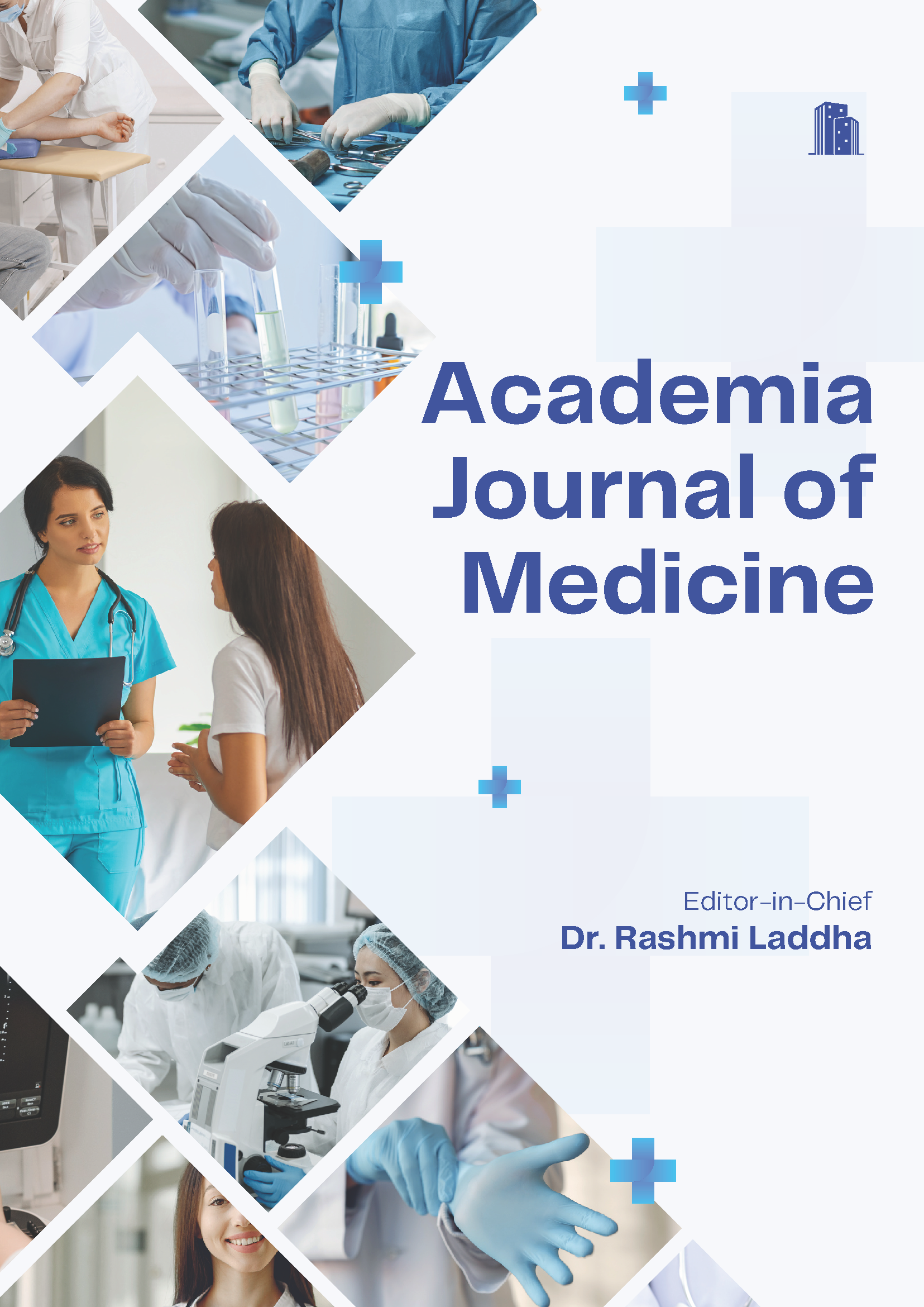Study of Lipid Profile in Newly Detected Adult Hypertensive Patients
Keywords:
Hypertension, Lipid profile, dyslipidemiaAbstract
Background: Hypertension is a leading cause of mortality and morbidity worldwide which doubles the risk of cardiovascular diseases. Hypertension and dyslipidemia are major modifiable risk factors associated with an increasing risk of cardiovascular disease. Aims & Objective: To study the different components of lipid profile in newly detected adult hypertensive patients and to compare the lipid profile changes among newly detected adult hypertensive patients with normotensive patients in a tertiary care hospital .Subjects and Methods: The study was done in the department of General medicine in Hassan institute of medical sciences, Hassan, Karnataka a tertiary care hospital. Patients were selected randomly from outpatient and in patients departments after taking consent and fulfilling the inclusion and exclusion criteria. Two hundred and fifteen age and sex matched patients were enrolled for the study and they were divided into two groups based on blood pressure. Group A - study group (109) newly detected hypertension patients and Group B –control group (106) comprising normotensive patients. Both the groups fasting lipid profile was studied and compared. Results: Total 215 patients were included in the study, of which 109 patients were in group A (study group) comprising newly detected hypertension patients and 106 patients were in group B(control) comprising of normotensive patients. The mean SBP (systolic blood pressure) was 159.4 mm of Hg in Group A whereas it was 113.2 in Group B, the mean DBP (diastolic blood pressure) was 99.4mm of Hg in Hypertensive patients (Group A), and it was 73.1 in normotensive patients (Group B). Serum levels of cholesterol, triglyceride and LDL were 194.2, 152.2 and 122.2 mg/dl respectively in hypertensive patients, whereas in normotensive patients they were 146.4, 110.2 and 102.6 mg/dl respectively which were higher in hypertensive patients. Whereas serum HDL was almost the same in both the groups. Conclusion: Newly detected adult hypertensive patients are dyslipidemic as compared to normotensive patients, so proper blood pressure control and monitoring of lipid profile at regular intervals helps in preventing major complications such as cardiovascular diseases and cerebrovascular accidents.
Downloads
References
1. Harvey JM, Beevers DG. Biochemical investigation of hypertension. Annals of clinical Biochemistry. 1990; 27(4):287-296.
2. Borghi C. Interactions between hypercholesterolemia and hypertension: implications for therapy. Current Opinion in Nephrology and Hypertension. 2002; 11 (5):489-496.
3. Neaton JD, Wentworth D. Serum cholesterol, blood pressure, cigarette smoking, and death from coronary heart disease: overall findings and differences by age for 316099 white men. Archives of internal medicine. 1992; 152(1):56-64.
4. Murray CJ, Lopez AD. Global mortality, disability, and the contribution of risk factors: Global Burden of Disease Study. Lancet.
1997 ;( 9063):1436-1442.
5. Joshi p, Islam S, Pays P, et al. Risk factors for early myocardial infarction in South Asians compared with individuals in other countries. JAMA. 2007; 297(3):286-294.
6. Liu Y, Zhang B, Chen JY, Chen PY. The relationship between fasting triglyceride level and prevalence of severity of angiographic coronary artery disease in 16,650 patients from TRUST study in stations era. Eur Heart J.2013; 34(suppl):p1550.
7. Lee W, Dennis A. Cecil Medicine. 23th ed. Philadelphia: W.B.Saunders Elsevier.2008; 430-50.
8. Hall JE, Brands MW, Henegar JR. Mechanism of hypertension and kidney disease in obesity. Ann. NY Acad. Sci. 1999; 18(892):91-107. 9. Kostas V, Stabouli S, Papakatsika S, Rizos Z, Parati G. Mechanisms
of obesity induced hypertension. Hypertens Res. 2010; 33(5):386-93. 10. Pastucha D,Talafa V, Malincikova J, Cihalik C,Hyjanek j, Horakova D. Obesity, hypertension and insulin resistance in childhood – a pilot study. Biomed Pap Med Fac Univ Olomouc Czech Repub.2010; 154(1):77-81.
11. Brown CD, Higgins M, Donato KA, Rohde Fc, Garrison R, Obarzanek E. Body mass index and prevalence of hypertension and dyslipidemia. Obes Res. 2000; 8(9):605-19.
12. Saha MS, Sana NK, Shaha RK. Serum lipid profile of hypertensive patients in the northern region of Bangladesh. J Bio-Sci.2006; 14:93- 98.
13. Pelkonen R, Nikkila EA, Oscine S. Association of serum lipids and obesity with cardiovascular mortality. British Medical Journal. 1997; 2(6096):1185-1187.
14. Sabri S, Bener A, Eapen V, Abu Zeid MS, Almazrouei AM, Singh J.Some risk factors for hypertension in the United Arab Emirates. East Mediterr Health J. 2004; 10(4-5):610-19.
15. Yin R, Chen Y, Pan She F, Liu T, Yang D. Comparison of lipid levels, hyperlipidemia prevalence and its risk factors between Guangxi Hei Yi Zhuang and Han populations. Arch Med Res.2006; 37(6):787-93.
16. Arauz- Pacheco C, Parrott MA, Raskin P; American Diabetes Association (2003) Treatment of hypertension in adults with diabetes. Diabetes Care .26( Suppl) p80-82.
17. Tomlinson JW, Owen KR, Close CF. (2003) Treating hypertension in diabetic nephropathy. Diabetes Care 26: 1802-1805.
18. Williams RR, Hunt SC, Hopkins PN, et al. Familial dyslipidemic hypertension. Evidence from 58 Utah families for a syndrome present in 12% of patients with essential hypertension. Journal of the American Medical Association. 1988; 259(24):3579-3586.
19. P.J. Barter, S. Nicholls, K.A. Rye, G. M. Anantharamaaiah, M.Navab, and A.M. Fogelman, “anti-inflammatory properties of HDL,” Circulation Research , vol.95, no 8, pp.764-772,2004.
20. M.I. Mackness, P.N Durrington, and B.Mackness, “How HDL protects against the effects of lipid peroxidation,” Current opinion in Lipidology, vol.11no.4, pp.383-388.2000.
